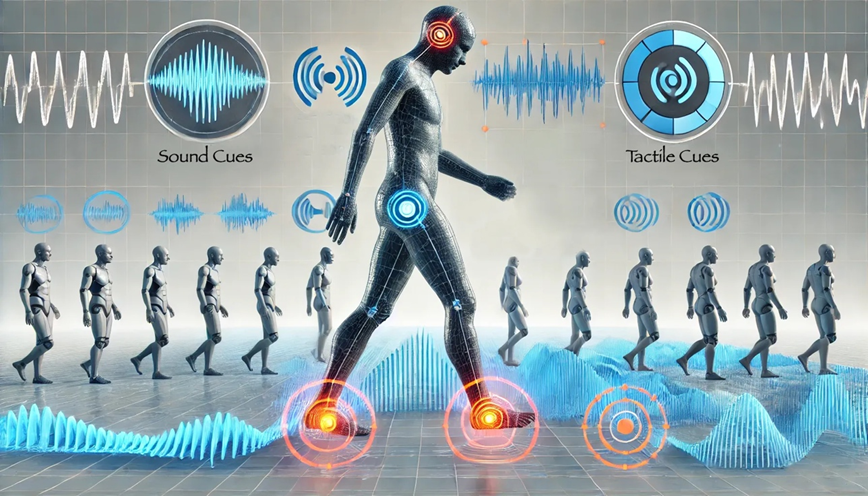Advantages:
- Sensory cues improve step length and timing, enhancing walking coordination
- Combined auditory-tactile cues adapt to individual needs for more effective therapy
- Braking force and stability improvements reduce fall risks
- These methods activate neuroplasticity, promoting lasting motor improvements
Summary:
Tech IDs 20B150 and 18B183
Post-stroke rehabilitation remains a significant challenge, as traditional methods like Constraint-Induced Movement Therapy and Split-Belt Treadmill training fail to address the complex neuro-muscular and biomechanical aspects of walking. These approaches often focus on symmetry and repetition, neglecting the brain's potential for adaptation and natural recovery. Our innovative solution introduces multimodal rhythmic asymmetric sensory cueing, which uses controlled variability to stimulate neuroplasticity and create new neural pathways for more effective rehabilitation.
Our technology combines Auditory Rhythmic Asymmetric Cueing (A-RAC) and Tactile Rhythmic Asymmetric Cueing (T-RAC) using advanced systems like the Computer-Assisted Rehabilitation Environment (CAREN). The study involved 18 able-bodied participants simulating post-stroke conditions, with gait parameters like vertical load distribution, braking force, and propulsion asymmetries analyzed. Results showed significant improvements in balance and stability, particularly with A-RAC and combined modalities (AT), reducing fall risks and enhancing walking efficiency. Future work includes testing stroke survivors, exploring long-term effects, and integrating wearable devices and virtual reality for better outcomes.

Combining asymmetric tactile and audio cues can better inform the person how and when to step leading to a better gait pattern. The speed and asymmetry of the cues can be customized to each person based on a simple test performed before therapy. This therapy is well suited for home-use due to the ability of a person to set it up and use it on their own.
Desired Partnerships:
- License
- Sponsored Research
- Co-Development